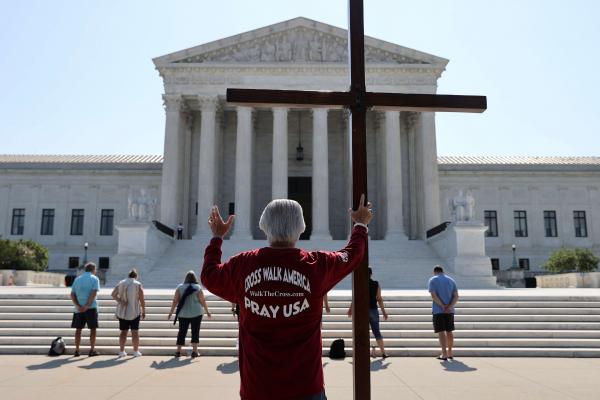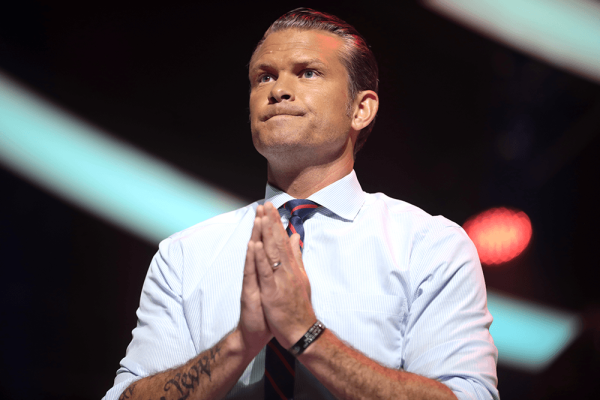The Supreme Court recently issued a ruling that stripped the protections of anti-discrimination laws from thousands of teachers at religiously affiliated schools. In Our Lady of Guadalupe School v. Morrissey-Berru,two teachers at Catholic schools sued their schools for alleged violations of the Americans with Disabilities Act (ADA) and the Age Discrimination in Employment Act (ADEA). The Court ruled that, even if their discrimination allegations were true, their lawsuits were barred by the so-called “ministerial exception,” a First Amendment doctrine that exempts religious institutions from anti-discrimination laws in hiring and firing employees deemed ministers. In so doing, the Court greatly expanded the definition of “minister” to include nearly every teacher at religiously affiliated schools, and quite possibly many other employees as well.
The evolution of the “ministerial exception”
Originally, the “ministerial exception” was intended to apply to religious leaders, primarily clergy. But eight years ago, in Hosanna-Tabor Evangelical Lutheran Church and School v. Equal Employment Opportunity Commission (2012), the Court held that Cheryl Perich, a teacher and plaintiff, should be considered a minister for purposes of the exception. While Perich was a non-ordained teacher, she had completed eight college-level courses in biblical interpretation, doctrine, teaching ministry, etc., earning a “diploma of vocation” from her employers. This diploma came with a new title: “Minister of Religion, Commissioned.”
In June 2004, Perich became ill, was hospitalized, and took a leave for the following school year. In January 2005, however, she told the school that she could return to teaching in February. In response, Hosanna-Tabor asked her to resign. When she didn’t, she was fired. Perich filed a lawsuit, arguing that the school’s retaliation violated the ADA, which protects employees from discrimination on account of disabilities. Hosanna-Tabor responded that Perich was a minister under the ministerial exception and that the school was therefore exempt from any obligations under the ADA.
Perich taught a religion class four days a week and led her students in prayer three times a day. She took them to chapel weekly and she led the chapel service twice a year, choosing the liturgy and hymns and delivering a short sermon. With all of this in mind, the Supreme Court justices unanimously agreed with Hosanna-Tabor that Perich’s claim was barred by the ministerial exception. Significantly, the Court did not issue a formula or test for deciding when a person should be considered a minister.
Who counts as a minister?
In the most recent case (Our Lady of Guadalupe), two teachers also filed wrongful termination lawsuits against religious schools. But their circumstances differed significantly from Perich’s. They were not required to take courses on biblical interpretation or doctrine. They didn’t lead worship or devotions. They weren’t commissioned by the church and never claimed to be called to any “teaching ministry.”
The first teacher, Kristen Biel, taught fifth graders at St. James School, and at the end of her first full year she learned that she had breast cancer. She told the school that she would need to undergo medical treatment that would require her to take time off. Shortly after receiving this information, the school told Biel that her contract would not be renewed.
The second, Agnes Morrissey-Berru, had taught fifth and sixth grade students for 16 years at Our Lady of Guadalupe School. In 2014, when Morrissey-Berru was in her sixties, the school’s principal expressed dissatisfaction with her classroom instruction and asked her if she wanted to retire. When Morrissey-Berru said no, the principal changed her status to part-time and did not renew her contract the following year.
Both teachers sued their respective schools. Biel alleged that her termination violated the ADA, and Morrissey-Berru argued that her termination violated the ADEA. On Wednesday, July 8, 2020, in a 7-2 ruling, with Justices Ginsberg and Sotomayor dissenting, the Court held that the teachers were “ministers” for purposes of the ministerial exception and that their lawsuits against the schools were therefore barred by the First Amendment.
It’s important to note that the teachers involved in the Our Lady of Guadalupe lawsuit had none of the accoutrements of commissioning or markers of being called to the ministry that the plaintiff in Hosanna-Tabor did. Despite the differences from the teacher in Hosanna-Tabor in terms of training, commissioning, leading worship, etc., the Court held that their core responsibilities were essentially the same. And those core responsibilities included teaching the Catholic faith to Catholic children. In the Court’s view, it didn’t matter that teaching religion was only one out of five or six classes that the teachers taught, that their contracts simply called them “teachers,” or that the employee benefits guide they received were specifically for “lay employees.”
More important to the Court was the fact that the schools described the teachers’ responsibilities as playing a vital role in carrying out the church’s mission. The Court cited several documents, including the teachers’ employment agreements, to support the schools’ description. Significantly, though, the Court gave substantial deference to the religious institutions’ description of the role of its employees in the life of the religion. That deference was so extensive, in the view of Justice Sotomayor, that it “threatens to make nearly anyone whom the schools might hire ‘ministers’ unprotected from discrimination in the hiring process.”
Essentially, the Court’s decision makes it possible for religious institutions to insulate themselves from any and all discrimination lawsuits simply by describing employees’ roles as important to carrying out its religious mission. As Justice Sotomayor noted, the Court held that Morrissey-Berru was a Catholic “minister” despite not being a practicing Catholic.
Individual rights vs. the rights of religious institutions
This is a sweeping decision. There are few teachers at religiously affiliated schools (including seminaries) to which the exception will not apply, even teachers discriminated against because of race or disability. Tenure will only be an honorific, with no legally enforceable increase in job security. The distinction between lay and ordained faculty will also be irrelevant, so long as the teacher is teaching the faith.
The decision threatens to enlarge the set of ministerial roles far beyond ordained clergy. Nothing in the opinion, for instance, limits the exception to teachers. It is reasonable to assume that the ruling could apply to a sound technician who works during worship services, or an organist, or choir director, or a lobbyist in a denominational public affairs office. If a religious organization with a good lawyer states in the employment agreement that such employees are “vital to the mission of the church,” nothing in this opinion indicates that the Court will protect the employee’s rights.
Ironically, in the same season that the Court decided that the Civil Rights Act protects employees from being fired for being gay or transgendered, the Court took those protections away from thousands of employees at religious schools. But this case reflects a trend in the Roberts Court expanding the rights of religious institutions. In Hobby Lobby, the Court exempted a for-profit corporation from certain provisions in the Affordable Care Act based on the religious beliefs of the owners. In Trinity Lutheran, the Court held that when a state gives grants to childcare providers to upgrade their playgrounds, it can’t deny a qualified provider solely because the provider is a church. In Masterpiece Cakeshop, the Court exempted a baker from a law prohibiting discrimination against LGBTQ customers. And now in Espinoza, decided this term, the Court held that when a state provides aid to students going to private schools, it cannot exclude students going to religious schools.
We’ll see if the trend continues next term, when the Court considers other issues relating to religion and discrimination, including Fulton v. City of Philadelphia, in which foster parents and Catholic Social Services challenge the city’s policy of refusing to refer foster children to agencies that will not certify same-sex couples as foster parents. For the past decade or so, the Court has tended to restrict individual rights when those rights come into conflict with the free exercise rights of religious institutions or even business enterprises with religious owners. My fear is that next term will see further erosion of those individual rights.
Got something to say about what you're reading? We value your feedback!




